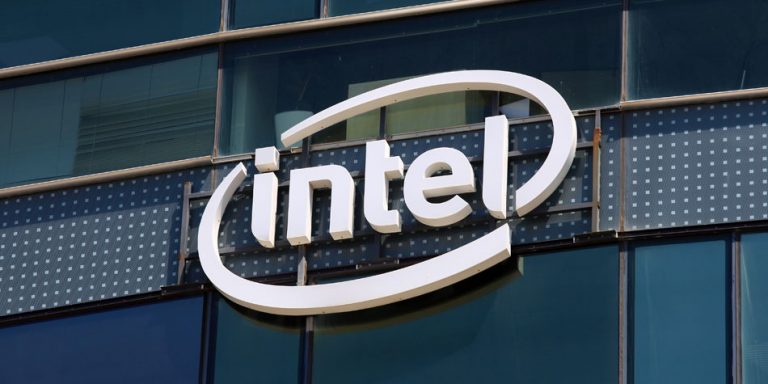It’s not exactly news that tech giant Intel Corporation (NASDAQ:INTC) is getting into the graphics card game. The company confirmed it in November when it formed its Core and Visual Computing division with the explicit purpose — among other things — of creating a discrete high-end graphics processing unit (GPU). What owners of INTC stock didn’t know was when that endeavor might begin to bear revenue.
They just got their answer. Last week, Intel said it would have a stand-alone graphics card on the market sometime in 2020. It’s an aggressive but achievable target.
With the euphoria and buzz of the news wearing off, though, it’s time for INTC stock holders to start asking more serious questions. Chief among these questions is: Can Intel actually make a dent in the dominance of the GPU market currently enjoyed by Nvidia Corporation (NASDAQ:NVDA) and Advanced Micro Devices, Inc. (NASDAQ:AMD)? And, the close-second question worth asking: Is there enough gold at the end of the rainbow to make it worth the company’s while?
The likely answer to both questions is a hesitant –maybe?
Too Much Catch-Up
There’s no denying Intel intends to make a splash on the graphics processor scene, poaching now-former AMD executive Raja Koduri in November to head up the new division. And, at an analyst event held last week, Data Center Group Vice President Navin Shenoy plainly said the company would be addressing all the key GPU markets. That means Intel’s going to try and establish itself as a player in artificial intelligence, data centers, professional design and the all-important video gaming market.
Big spending and new business units don’t necessarily translate into success, however. And they certainly doesn’t always translate into profits.
Making the task ahead even more Herculean is the fact that Nvidia and AMD are not only current market leaders, they’re names consumers are familiar with and at least somewhat loyal to. Intel is the odd man out on the GPU front, late to a party that never stops moving.
We’ve seen the risks of not being a first-mover within the technology arena before — including from Intel, no less, and even within the GPU market.
Case in point: Last month, it said it would release its first commercial neural network processor late next year — a project the company had been working on for some time. The problem is Nvidia’s V100 data center GPUs already provide, commercially, almost as much computing power as Intel’s neural processor will.
Jim McGregor, founder and principal analyst for Tirias, bluntly opined of the matter, “Intel is late to the party and shooting at a moving target. You can bet that the Nvidia solution will be well beyond that point by that time. It kinda sounds like Intel and GPUs all over again.”
Analysts may well be making similar comments about Intel’s discrete GPU business a couple of years from now.
Not a Huge Market
Truth be told, nobody really knows what the future holds for graphics processing units.
They were and still are an integral part of computers, and basic GPU technology has been and still is a piece of the technical puzzle for laptops and other portable devices even if a discrete, standalone “card” isn’t part of that equation. That’s an ever-changing market though. Meanwhile, their role in artificial intelligence development and cryptocurrency mining has been an unexpected and pleasant surprise, giving Nvidia and AMD a little more pricing power than they’ve enjoyed in the past.
On a dollar-for-dollar basis though, what’s “big” for Nvidia and Advanced Micro Devices may not look as big to owners of INTC stock.
For perspective, Intel is a $256 billion behemoth that’s generated $64 billion in sales over the course of the past four reported quarters. Nvidia’s market cap is a much smaller $160 billion; it’s done $11 billion worth of business for the past 12 months. And AMD? It’s only driven $5.8 billion in sales for its four most recent quarter, in line with its market cap of $15.8 billion.
Intel could swipe a wide swath of both rivals’ GPU business — and it wouldn’t matter a great deal.
But the GPU market is growing fast? That’s true. The advent of cryptcurrency and artificial intelligence has opened up new doors to opportunity for discrete graphics cards, including custom-built ones. Even factoring in those tailwinds though, Gartner still only believes the discrete GPU market will be worth around $11 billion by 2022. That’s not going to move the needle much, even if Intel finds other ways to monetize its graphics-processing know-how.
Bottom Line for INTC Stock
None of this is to suggest an investor should avoid INTC stock. It’s still the computer processor market leader, and though AMD has shaken Intel’s chain with a round of high-performance CPUs, Intel is already working on a counterpunch.
It is to say, however, if its entry into the GPU market is the only reason you’re interested in Intel, you may be disappointed at how little the market actually ends up meaning to the company. It’s not the growth engine the iconic-but-tired company needs.
As of this writing, James Brumley did not hold a position in any of the aforementioned securities. You can follow him on Twitter, at @jbrumley.

